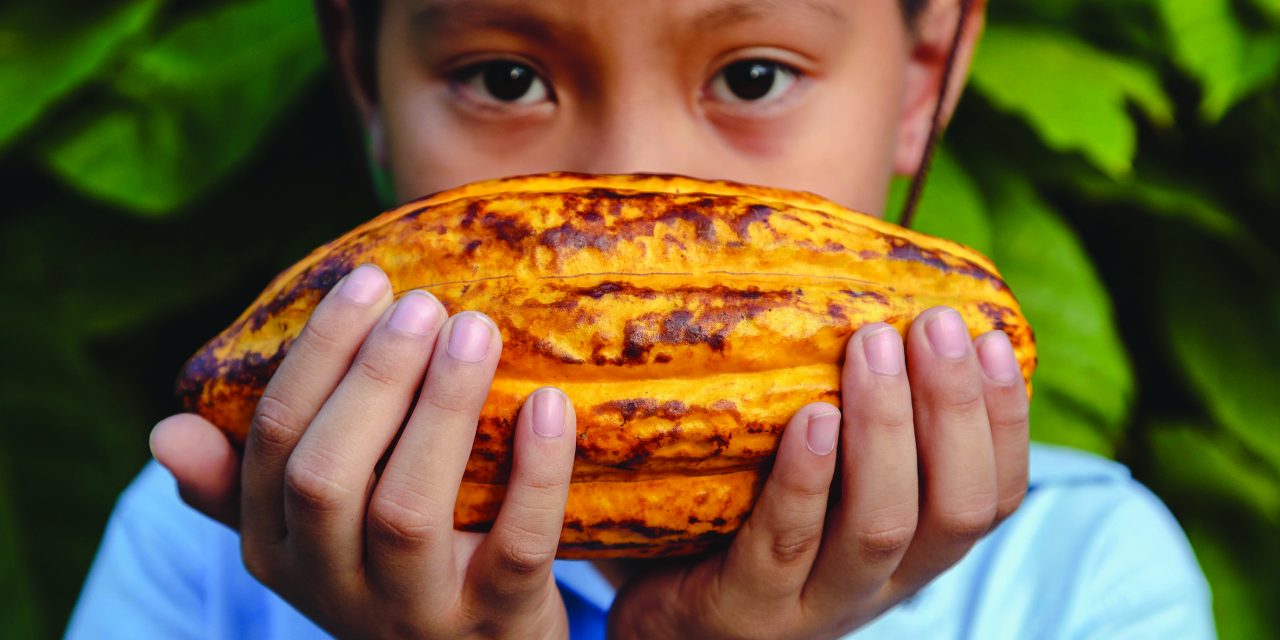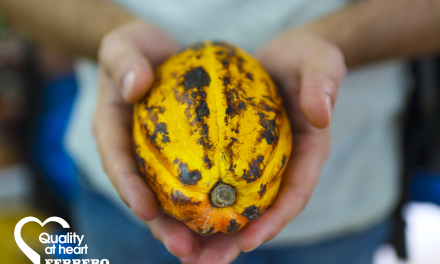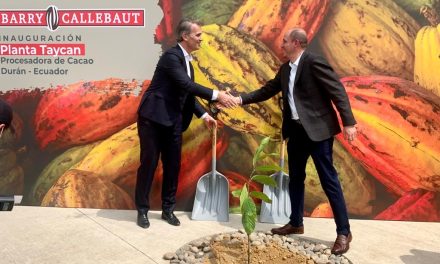A new report produced by the European Commission has highlighted that more needs to be done to support the elimination of child labour and development of sustainable cocoa production. Kennedy’s takes a look at the findings.
The European Commission has released its latest report ‘Ending Child Labour and Promoting Sustainable Cocoa Production in Côte d’Ivoire and Ghana’, outlining details on proposed due diligence action to tackle major child labour issues in Ghana and Ivory Coast.
According to the latest report, the challenge of ending child labour remains widespread around the world with 152 million children engaged in child labour. Africa is home to nearly two-thirds of all the child labourers in the world, with 85% of them working in the agriculture sector. The EU Commission also notes that between 2012 and 2016, child labour in agriculture in Africa actually rose instead of declining.
In terms of child labour in cocoa, a recently published study, carried out in 2019, indicates that the overall prevalence of child labour in cocoa producing areas in Côte d’Ivoire and Ghana has not substantially decreased over the last 10 years. However, there has been a reduction in child labour in some localities, especially among households where initiatives to address this issue have been implemented.
The report notes, however, that increased cocoa production has led to increases in child labour in areas that child labour reduction initiatives have not been implemented or where previous gains from such programmes have not been sustained.
The study
The study conducted by the EU Commission had two main objectives:
- To analyse the root cause of child labour in the cocoa value chain and identify key gaps
- To propose solutions to eliminate child labour in the cocoa value chain and promote responsible and sustainable cocoa production in Côte d’Ivoire and Ghana.
Through interviews with key stakeholders, informants from the cocoa industry, key government officials, representatives of European Unition institutions and workers and employer’s organisations, in addition to analysis of documentation and web-based information, the study revealed that “despite much effort” ending child labour and promoting sustainable cocoa production “have proven to be more complex than anticipated”.
Main findings and conclusions
The report unveiled several explanations for child labour still being a prominent, such as: efforts to eliminate child labour are not ‘sufficiently and structurally’ embedded within a functioning institutional support system; a wider system-based approach is needed; and poverty reduction, education and youth focus, gender and deforestation need greater attention.
In light of this, the report emphasises that improvements are needed and there are a number of challenges that need to be overcome to make a positive impact, such as:
- Poverty of cocoa farmer households: There are low farm gate prices for cocoa beans and analysis indicates that rising prices alone will not solve the challenges to eliminating child labour. In addition, the study found that there are low farm yields per hectare due to ageing trees, infertile soil, and outdated production methods. Finally, there is a lack of diversified incomes from sources other than cocoa to supplement incomes; farmers often have to pay for public services and other costs.
- Lack of access to quality child protection services: There is a need to scale up birth registration, government-managed identification, and remediation of cases of child labour and other forms of exploitation, abuse, and neglect. In addition, due diligence mechanisms and child protection mechanisms need to be further scaled up and integrated.
- Lack of access to quality education
- Lack of sufficient and quality physical infrastructure: Due to insufficient and low-quality roads, bridges, schools and water-sanitation-hygiene structures, parents are reluctant to send their children to school. This results in poverty, and therefore child labour.
- Internal and cross-border migration and trafficking: Child labourers are trafficked due to poverty. There is also much higher reliance on own-family child labour in cocoa producing areas.
- Deforestation: The study highlights that deforestation is associated with poverty and the need to increase production, which links to child labour.
- Limited coverage of due diligence mechanisms: Currently, due diligence coverage in cocoa producing communities with child labour reduction mechanisms is only between 10 and 20% in cocoa producing areas.
- Limited attention to social inclusion: There is limited attention paid to gender and the inclusion of other types of vulnerable people in child labour programmes.
- Socio-cultural attitudes, customs, and practices: There is currently reliance on child labour as a fall-back option instead of hiring adult labour.
- Limited access to targeted social protection, health, and other social services: The study shows that services are unavailable, need better targeting, especially in far away and difficult to access in areas at high risk of child labour in cocoa production.
Other areas where there are challenges include weak institutional environments, weak enforcement of legal and regulatory frameworks, lack of decent work opportunities and Technical Vocational Education and Skills Training for older children, and weak farmer-based organisations.
Proposed solutions
As a result of the findings from the study, the EU Commission has outlined a range of solutions that aim to eliminate child labour and promote sustainable cocoa production.
Firstly, the report states that multi-stakeholder process platforms need to be established and implemented at all levels to eliminate child labour and ensure cocoa is produced sustainably.
This includes developing a multi-stakeholder process through transformative agenda at international, national and local levels. At each level, there should be “mechanisms for vertical and horizontal communications, joint planning and coordinated implementation of synergistic actions”. Plans should also be developed to address all the root causes of gaps to eliminate child labour.
The second overarching solution is to create a systems approach, adopted with continual improvement of initiatives of initiatives based on consistent feedback from quantitative and qualitative data collected on child labour elimination initiative and child labour prevalence.
Thirdly, the report recommends an operationalised result-based management system be developed and implemented, building on, and expanding due diligence accountability systems of all stakeholders.
In addition to the recommended overarching solutions, the report sets out more specific advice.
- Aligned policies
Partnerships and initiatives of Côte d’Ivoire and Ghana Governments and corporate actors should be aligned with international conventions, standards, guidelines, national policies, and plans.
The report recommends improving existing partnerships and cross-border agreements
among the Economic Community of West Africa States (ECOWAS) – Côte d’Ivoire,
Ghana, Burkina Faso, and Mali. In addition, agreements of initiatives for the identification, return and reintegration of trafficked children to return home should be scaled up.
And finally, it should be a priority to ensure that child labour elimination is directly cited and fully integrated into all economic development policies and plans, especially in agriculture-related economic activities or investments. Including in the design and monitoring of the plans.
- Environment for reduced child labour and deforestation
The report outlines that there should be a “strengthened enabling environment” for reduced child labour and deforestation with “particular attention to local developmental planning and implementation, and localities at high-risk”.
Expanding on this further, the EU Commission points out that social protection mechanisms to help protect environmental, health, social and other shocks should be developed and expanded.
In addition, local development plans should be adapted or developed to be more comprehensive, integrated and strengthened and synergistic in regard to child labour protection systems.
Among other recommendations, there should be increased construction of physical infrastructure, with emphasis on roads, accessible schools, child protection infrastructure and one-stop referral locations for children in, or at risk, of child labour and other exploitation.
- Improving work conditions
The report sets out that the poverty of cocoa producers and ancillary activity workers should be reduced through improving work conditions within an environmentally sustainable environment. Through this, efforts to ensure that price and income from cocoa at the farm gate continues to increase, should be scaled up too.
Furthermore, the EU Commission states that there should be further development of Global Positioning System (GPS) and other forms of farm monitoring tools to identify and follow up transgression into new forest areas.
- Farmer-based organisations
Among its recommendations, the report states that there should be “increased and strengthened farmer-based organisations” and communities given a voice for effective functioning and contributing to reducing child labour. The strengthening and scaling up of new and existing farmer-based organisations should contribute towards increasing productivity, and decent work for all environmentally sustainable conditions.
- Social behavioural change
Finally, the report recommends the development and implementation of good social behaviour change communications strategy guide to inform the behaviour change interventions, based on existing effective practices.
To find out more about the EU Commission’s plans to tackle the ongoing issues of sustainability and child labour, read the full report here: https://bit.ly/3l0cLKl







